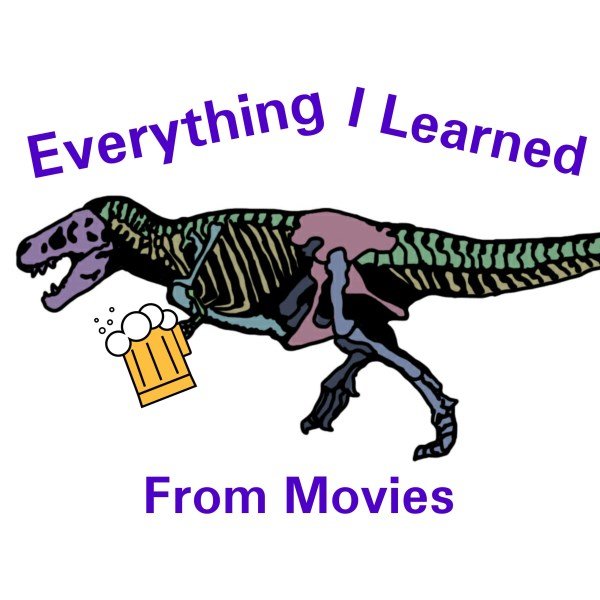The Eastern Museum of Motor Racing (EMMR) is built on a wooded hillside overlooking the historic Latimore Valley Fairgrounds and racetrack. The 40 acre fairgrounds and track are restored to their original beauty creating an atmosphere that makes the EMMR a living museum. Several times a year EMMR holds events where these historic cars can be seen on the track!

The Eastern Museum of Motor Racing is proud to be the home of the Chris Economaki collection, a noted motorsports journalist, and editor of National Speed Sport News, The library contains the Central States Racing Association paperwork, the racing columnist Bob Chorpenning’s collection, the collection of noted historian Joe Heisler, while the The Jerry Reigle Research Room contains the EMMR’s vast photograph collection. There are an estimated 20,000 photographs in the EMMR collection, including the large Jack Gunn collection.

And with us for a special guided tour is Dirt Track hall-of-famer and former curator for the Museum, Lynn Paxton.
Spotlight

Located at 100 Baltimore Rd, York Springs, PA 17372
- Museum Hours: April-November; Friday, Saturday & Sunday – 10am-4pm
- December-March; Friday – 10am-4pm
- Admission Fee: FREE, donations welcomed.
Volunteers Needed at the Museum… The EMMR Needs Your Help! They are looking for volunteers to help staff the museum. Please email admin@emmr.org if you are interested in helping!

Notes
- This episode is a recording of a live tour of the EMMR, sit back and enjoy the memories, stories and guided behind the scenes of the Museum and 100 years of Dirt Track racing!
and much, much more!
Transcript
[00:00:00] Hello and welcome to the Gran Touring Motor Sports Podcast Break Fix, where we’re always fixing the break into something motor sports related.
The Eastern Museum of Motor Racing, or E M M R for short. Is built on a wooded hillside overlooking the historic Latimore Valley fairgrounds and racetrack. The 40 acre fairgrounds and track are restored to their original beauty, creating an atmosphere that makes the E M M R A living museum several times a year.
The E M M R holds events where these historic cars can be seen on the track. The Eastern Museum of Motor Racing is proud to be the home of the Chris En Omack Collection, A noted Motorsports journalist and editor of National Speed Sports News. The library contains the Central State’s Racing Association paperwork, the racing columnist Bob Sharpenings collection, the collection of noted historian Joe Heisler, while the Jerry Rigal research room contains the E EMM R’S Vast photographic collection.
There’s an [00:01:00] estimated 20,000 photographs in the collection along with a vast variety of vehicles on display to include a great collection demonstrating the hundred years of dirt track racing. And with us for a special guided tour is Dirt Track Hall of Famer and former curator for the museum. Lynn Paxton.
Lynn, tell us about your racing past. You were in the dirt, oval world. Your car’s here on display. Yeah, I, I was born about four miles from Williams Groves, and my dad had the last garage, an auto cart on the way to the grove. As a boy growing up, I got to see a lot of the, the early racers from the early fifties coming through and stuff, so it interests me.
So I rode my bike over to Williams Grove to see what was going on, and I got hooked. What else can I say then? My career started in 1961. I got to run a mechanics race at Silver Springs. Once I drove one time, I knew that’s what I wanted to do instead of just working on, so we built an old car in 62 and then branched out in 63 a [00:02:00] little bit and then moved up in 64 to a, the old Supers, we just went with the flow up until Sprint cars came in in the late sixties.
Pretty successful up until last race I ran was 1983. I won the national opener to Grove. So we had 23 years. Wow. A good career. So what then changed? What inspired you to open this museum? I was always a history buff, always loved it. Even while I was racing, my fond memories were of Tommy hen ships in the fifties when he was very dominant player.
And then I got to be racing out in Ohio and all-Star race or something, and I happened to run into an old Heus car, which. I happen to recognize they were built. Allentown and I went over and talked to the guy that had it out there. He told me it was original at Tommy Hen Ships says, wow, that would’ve been the car I watched.
So I came home and called hen Ships and asked him, is it possible, he basically told me the same thing in reverse, and then he told me the one sure thing to look for was the horn [00:03:00] steering that he had bought outta the car. Horn was killed in, and if it was still in the car, it was the car. The next week we went out to Mansfield High to run an all-star race.
I went over and looked and sure enough it had no horn steering in it, so it was definitely the car. So I negotiated to buy the damn thing and restore it. I just like the old cars. Heus is quite a mystery. I have a pretty good register on. A lot of the cars were built now in town from uh, he built roughly 200 cars in his career.
So here we stand amongst all these historic race cars. So why don’t you take us on the tour of the facility? Well, historic race cars, right in this room right here. You talk about uniforms. Here you’ve got Ted Horn, national Champion, Tommy Heitz, Mario Andretti. You’ve got some pretty dynamite uniforms hanging in here.
Johnny Thompson back there. These are all Hall of Famers. There’s Billy Pouch, Dave Blaney. Smokey Snell Baker. Here you got Wolfgang Kinser. You know, you can have quite a race by the [00:04:00] people representing represented in this room. I get ’em to come in. I always try to hit ’em up for a uniform if we have ’em here.
So everything here is donated then? Yeah. Yeah. Same way with the cars. Our signage is very good in our cars. The bottom row will tell you if it’s on a loan from or donated by. So here we are at the entryway, right? Kind of an eclectic blend of motorcycles. Our entry is, and that kind of a jack of all trades out here.
I try to put something different in here every year way. We have sprint car, we have a midget motorcycles engine. The police motorcycles in there because Mike Worland was our police chief here, and his son was killed with that bike on a tour about 10 years ago. Mike just bought it from the police deal and he asked if he could set it in here and I said, yeah, we.
That’s more of a little local flavor right here. We do things like that. Like I said, we try to change things in this window to entice people. Cuz this is always [00:05:00] open. Yeah, you can always come in to here. We try to get you to sign in and what have you, and then go from here. Now this area here, there’s a lot ’em, valley Fairgrounds that preceded Williams Grove.
It was built in 1925 and actually went head to head with Williams Grove in 39. But these are all pictures as we restored the old fairgrounds, we did that first before we built the museum. Oh wow. So the fairgrounds is restored back to the twenties and thirties. They’re gonna be running cars tomorrow down there they are.
DC reunion. This area here, we honor somebody for the year. Stan Lovich is a big supporter of ours from Hazleton. This was his car and his stuff. He raised a lot of money for us over the years. And then our Grand Marshall this year is Kenny Brn. Kenny’s 95 years old, and this was one of his cars. He was in racings since 1953.
All phases and just a tremendous gentleman. So this opening display here changes every year, you said? Do you have a plan on change? Yeah, this will change in December. Do you have a plan on who’s gonna [00:06:00] be here next year? I do not know. I won’t know until I have an idea, but I don’t know until it goes in front of the board.
But we always change for our, uh, December, our Christmas deal. This has always changed for the next year. So this is our midget area. First car we come on here is a three quarter midget, and this was Mario Andretti’s very first open wheel ride. It’s a Heus car with a 6 53 Triumph motorcycle engine. Next car up.
Very early midget in 1937. This has a Van Blark single overhead cam boat motor. You gotta remember the midgets used a smaller engine, and you’re gonna see about every different type of engine used at that cubic entry. Okay, now this next one’s, the one I told you, has the alto outboard. And this was the 19 41 13, A Eastern Championship car.
That’s the Gordon Racing Team? Yes. And the name Gordon Racing. They named it after the street that they were on in Allentown. Now this was 1937 Midget with a little VH [00:07:00] 60 like Henry put in his fours from 37 to 40 as a economical piece. They weren’t worth the hoot, but in the midgets, they were quick, they weren’t good.
This one’s kind of needed. It’s got bmw, world War ii, BMW motorcycle cylinders, and they made a block and crank back in the forties. So it’s made much like a Volkswagen. Okay. Fritz Myer and uh, Joe Gertler built the chassis. So it’s actually two BMW motorcycle engines. Yeah, right. Yeah. Yeah. They just made a common block.
Now this got a Ford Tractor engine, little Fergie, which had the right cubic inch. Of course the next two are offy powered. In the early thirties, they, they needed a small engine, so they went to Miller. Miller had a straight 8, 180 3, and he whacked that in half and just used the front half of it and became a 97.
And then they got larger. But of course, they set the standard for years and years. That’s what those, they often hazards. Yeah. Oh yeah. Yeah. The constant hot car. Like I said, that was a 1950 [00:08:00] championship car and then the uh, lemon car, that’s the car that Mario Andretti won three races in one day in this car right here.
And you guys call that the three in one midget. They called all their stuff after that. Three in one. The Metca brothers, cuz Mario won three races in one day. He’s not a very big guy. You look at Mario. No, he wasn’t. So tell us about Tommy’s garage here behind us. Tommy was seven time eastern champion. When we did our deal here, Mario called him a giant Chris economy, called him a star.
AJ Foyt called him his idol. So when you get those caliber guys talking about Tommy Heitz, that’s pretty good. Now here’s a picture in 1955. Of he Schitt’s garage. What we actually did was went down and pulled all this stuff outta his garage. Everything works too. The lathe and everything is operable. And the car, that’s the car I think I told you about.
This is the car that I restored. It has the horn steering and stuff in it. So as we see it here is exactly how you [00:09:00] would’ve seen it when Tommy was using it at the original location. There you go, right there. Very cool. I mean that you’re seeing everything right there. So this predates when you started racing though?
This is still the fifties. Oh my ass. Yeah. Oh yeah. I wonder how difficult they were to drive. Well, I’ve driven a few of them. They were a handful, no protection, skinny ass tires back then. It, it took set of gun ass to drive a race car as How much horsepower do you think these made back then? Well, 200, huh?
That’s about what these put out. But at the time that was, that was good. And probably about a thousand pounds. Right. So a powder of weight ratio. Uh, this is probably. Closer to 13, 1400. Still. That’s a good, oh yeah. Good ratio. Oh yeah. Oh yeah. Oh yeah, for sure. Yeah. Now this is all stuff that we got out of Tommy’s garage, and this is all information on Tommy.
This is a guy that did a lot of the motorcycles and stuff. He built everything by hand. He did a lot of things for us. Everybody likes to sit in that car. There’s Jack Hewitt, there’s Sammy, [00:10:00] Doug Wolf gang. There’s Kinser. Jeff Gordon, a young Jeff Gordon. You know, we’ve had a lot of people sitting in that car, a Rico Abrao, and like I said, I had him in, he was sitting in it.
This is the Chitwood car. Actually it was Briggs Cunningham’s very first race car. The sports car guy. Money was no object with him, but he kind of fell in love with dirt track racing and then later on it was chip wood car. Actually his last sprint car chip wood ran till he kind of retired. A running thrill show the trophies and all that stuff.
All the horn stuff. Ted Horn. I actually had the horn car here. And we rotated out, but I left all the trophies and stuff. Horn was killed in 48 up on top of that case as a tail off the car he was killed in for all his trophies and stuff. We had the largest collection of Ted horn’s stuff, the rest, and we just got more in his national championship shirt area right here as Ken Hickey.
He was the offy man around here. That was a young Ken and there he was 87 years old, still working on him. [00:11:00] He’s a fam en engine builder you said? Yeah, yeah. Rebuilt the A. He was from Ambler and I don’t need to tell you where Ambler is. You know where Ambler is. Matter of fact, this one of the last engines he did, that’s a Ken Hickey fresh engine right there.
We have this Edmonds midget. I like it because the last race that run, it got put away for 36 years. They just never ran it again, and then lucky enough to buy the whole deal. And so it’s exactly the way it won this last race, and this is a Volkswagen Flat four powered Midget car. Well, it has a Volkswagen in it, of which is, this is, and of course this is the Sesco a flat.
Sesco. Now SESCO’s usually were half a Chevy, but he wanted to make it lower. So this got all Chevy parts in that. Ron HOKs built this out in Wisconsin and then he had two left. So he brought one in and gave one to us. So here on the left it says Hershey Stadium. Tell us about that. I don’t think a lot of people realized there was a racetrack at Hershey.
Well, it was built where the Hershey Stadium is wood built for auto [00:12:00] racing and sporting events. And these are all pictures. The first event there was an auto race same week that Williams Grove opened in May of, of 1939. So there’s a picture of ’em building it, and there it is finished. Of course, now it’s concerts and football games and stuff.
But at one time, the last race was held there, I think in 1983. I got to run there and I want a few features there. Very cool. Yep. A lot of people don’t know that. Here’s the horn tail and here was the hub, the spindle, broken horn’s car. These goggles went with him on his last ride. Wow. Now, here we are at the, at the very early sprint cars.
This was called a bobtail in the twenties. This thing was unbeatable. John Gerber from Davenport, Iowa. There’s John with his helmet, his goggles and his bow tie. You notice he always wore a bow tie. I wouldn’t call that much of a helmet. I wouldn’t call that much of a race car, but it was light apparently very quick, and he really went good with it.
The car in here, that’s a dryer. It’s one of the first six [00:13:00] dryers ever made. Pop started building cars in 1928. That car sat for 84 years in Davenport in the racing shop. Here’s pictures of it. In October we went out and that’s the first time in 84 years they came outta the shop. Well, I have it all on video.
Matter of fact, that’s his son. That’s John Gerber’s son, Jim, and he’s 87 years old right now. So is this one of the newest acquisitions in the museum then? Yes. Yes. This display just got put in in the spring here. And then all this stuff right here is stuff we brought home from out there at the shop.
That’s one of the first six built. He actually bought this car. He was running two of these and he actually was running against this car. And then he uh, uh, buying this cuz he wanted to make an indie car and this was gonna be his indie car. He lost Jimmy Snyder, who was, who was supposed to be his driver.
He was in the connecting rod business for the Model B Fords and World War II came around and he got to working for the government stuff. So [00:14:00] this thing just sat and sat and sat. So it’s kind of interesting that it stayed, that we were very thrilled to be able to go out and pick that up. It’s a joint deal.
We deal with the Sprint Car Hall of Fame in Knoxville. We did a display out there and they have the car that won the opener to grow and we rotate displays. It’s better for us to work very well with them absolutely than we do. These are the early cars, twenties. Okay. And then this car here would be from actually the forties, and it has a Ranger aircraft tension.
So inland six. Right. It’s an inline six. See the prop one on here? That was top front. Mm-hmm. And the, you know, you gotta flip it over port of it where the propeller is. Yeah. Right, right. Thing looks heavy but only weighed 375 pound cuz it’s magnesium. It put out the same horsepower as the $4,000 offenhauser.
But after World War ii. They surplus these, you can buy ’em for 75 bucks. So if you were running IMCA or csra, there was no cubic limit shit. They were buying them [00:15:00] and just running the crap out of ’em, you know, at that kind of money. Now you three A, you couldn’t run ’em because the cubicle, they were probably pretty high Rev being in a No, they were very low risk.
Really? Yeah. They put their horse pour out at about 2,800 RPMs. Now, I asked a couple of the old guys that ran ’em. I said, how hard did you turn your engine? And the guy said, oh, I turned mine over 4,000. Was it still? He said they were still strong, but he said, when I couldn’t see outta my goggles from the vibration that it was too much.
That was the answer. I love all the creative ways they did carion on these motors. Nothing, well, nothing standard. It’s all very interesting. Well, it was all homemade. There was no. They finally started making aftermarket stuff for the bees cuz there was so much of it. But you’re right, this is a homemade for three, two s actually in that one case.
Or there was a set of hill borne injectors for one of these, which is very rare. This has got Solex carburetors on it. These are actually original to this car, the header and stuff. [00:16:00] This thing ran a ranger in it. Yeah, you looked at the chip wood car back there with all the chrome and stuff on it. Most of the cars of the forties and stuff were just plain jeans painted like this Ford wire wheels and stuff.
Now the exotic cars were pretty like that. 80% of ’em were like this car here. The number four car here from the forties, kind of the tail end of that. And we jumped to the number 39. So if we moved from the forties to the fifties, well, we’re actually going up to the sixties, the fifties. I had a car here.
It had to leave. You’d have to put like the miracle power in here. Gotcha. Okay. In other words, forties, early fifties. Yep. And then this would be sixties. But you do see a radical jump in design from the Oh, absolutely. They’ve got lower centers of gravity. Well, different suspensions. Well, we’re gonna walk up here now.
These cars here. Would’ve won a wing or not. I didn’t put wings on ’em simply because you get to see a little bit better. And my car, they’re the boobs car. We let anybody who wants to get in it, get in it. Correct me if I’m wrong, but when you kind [00:17:00] of transition from these forties sprint cars to the fifties and sixties are more like the indie cars of the time, if you kind of look at them in person.
Right. Well, you gotta remember something. World War ii, most of the cars prior to World War II were kind of crude. There were some nice cars, but most of ’em were home-built. Nothings. Okay. All the racers went to World War II and they learned how to work aluminum and use Zeus buttons. And thank God we’re still using surplus in World War II today.
And that’s what spawned racing after World War ii. All of a sudden, the cars, they started using the technology to build aircrafts, Zeus buttons, aluminum and stuff, and that’s when things drastically change. Absolutely. Why Technology? Learning how to work aluminum probably was the evolution of fuel. Also off fuel development during World Wari.
A lot of, well, yeah, but all I can tell you is there was a lot of experimentation around here on Fuel. If you tell he Schitz telling a story about running these Model T and they didn’t know anything about hopping [00:18:00] the fuel up and they heard that if you use North balls, Had ether in it. So he said about they bought a bunch of mothballs.
The problem was they were only gonna put one in one mechanic, put one in, didn’t tell anybody. The other mechanic put one in, and he said, I put one in. He said, man, we took the lead. That thing was really haul ass. And he said, about halfway through the race, that slowed down to a crawl. It burnt the thing up.
But that experimentation went on for a long time. Talking about that, I could show you the horn pistons over here. He was the first one to experiment with magnesium pistons. They were so much lighter than Illumina. Okay. He could turn his engine 2000 RPMs more, and I have those, but he had to experiment with the fuel because he kept melting the tops of the pistons.
They weren’t as strong as the aluminum. He entered into a lot of that too. Now, as far as World War ii, you’re right, the Germans were far ahead, everybody, as far as that technology. Let’s face it, that’s where the Volkswagen came from. On a [00:19:00] lot of these, you notice that there’s a lot of armature in the way of levers and things like that to move things around.
It’s all very crude and very simple cuz they’re race cars. How many of these are, let’s say, manual gear boxes? How many speed are they and when did they transition to the morph, like power glide transmission? There was a rule that they had to be able to back up and stuff. So they had oh four transmissions in them.
But then finally it got to the point where they were just using them in and out now where they’re just high gear. Got it. Like if you come up to these, these all have quick changes. Nothing but in and out, direct drive. So you took a couple laps to get up to speed then to kind of set your pace, cuz you can’t just Well, you go at full.
No, they would, they would, uh, no, they would push you off. Yeah. And if you had heat in the motor, Like my mechanic used to tell me, if you don’t have 140 degrees, I don’t care if the green flag’s outta what you don’t run the motor. You know, just to protect it, you know? Davy’s still a pretty sharp man, Davy Brown.
So you definitely see a drastic change in safety in this. Oh, absolutely too. My first ride actually was in the car after [00:20:00] this, the cook car, and I think there’s a picture up front here of the start of the feature. Yeah, it’s right there. Here’s my very first sprint car ride. That’s the start of the feature.
Allentown. Wow. I’m in the 38 car clear out there, taking the high line. I didn’t want to, but that 24 car kind of came in and they put me over the wall. That was the start. Now I was running super modified and stuff around here, but that was my first sprint car ride. So what would you say after all your years of racing, what was your biggest oops moment?
Oh, I dunno. There was funny of them. I can’t really. Pick an oops moment out, uh, other than waking up in the hospital one morning and, uh, not know how I got there. Okay. Yikes. I’ll tell you the story at, I didn’t realize it, but I apparently got hurt pretty bad at Hagerstown till I came to. I was in kind of intensive care.
There was two of us in there, and I woke up and my hand was banished and I had a schock on it, said [00:21:00] Washington County. While I was smirk enough to know that Washington County was the Hagerstown area, I wasn’t in Pennsylvania. The guy that was in the room with me, he started having a problem. So I, they had a button pinned there, so I pushed a button three o’clock in the morning, nurse comes in and said, are you all right?
I said, I’m all right, but this guy’s having a problem. So the next thing I knew, Man, there was people in there working on him, and he was gone. Now I got more questions than answers. I didn’t say a word while that was gone and they were taking him out and the last nurse was just getting ready to walk out.
I said, ma’am, can I talk to you? I said, sure. I said, what am I doing? She said, don’t you know? I said, no. I said, I just basically woke up and she said, well, I don’t know. My shift changed at one o’clock and you were here. That was it. She left. Needless to say, I wasn’t going back to sleep. I’m trying to figure it all out.
The next morning there was a guy coming around selling crap out of a cart, newspapers and stuff. So I bought a newspaper, went to the racing deal, and there I found [00:22:00] out exactly what had happened. I read it in the newspaper. About a half hour later, the promoter and my wife and the doctor came walking in and the doctor said, do you remember?
I didn’t, but I told him exactly what the newspaper said and that got me outta the hospital. Probably shouldn’t have because if I lean over it, I’d fall. It screwed up my, what kind of head gear did you have? Helmet, bell Helmet. Okay. At the time, it was as good as it was. The problem is once you get your bell wrong, once the next one’s you get knocked out a whole lot quicker.
It’s just like quarterbacks. And that’s why you had a lot of guys retired early because. Another blow to the head, be a headache to you. But a guy that’s had a lot of blows to the head, it can mean paralysis. It can mean every, I don’t know how we get off on that tangent, but, well, let’s go back to your timeline a little bit.
Yeah. So you started in the early sixties. Yeah. And you ran all the way up through 1983. Well, I won the National Open. That’s the last race I ran. Actually. We, uh, won the National Open in this car in 1982. [00:23:00] It’s restored. This car here is sitting here. We left the wing off and have the Nerf bar off. Anybody wants to sit in that car as welcome to get in it.
So how many championships under your belt? I don’t know exactly. 9, 10, 11 when that rings somewhere. So as we get to the early eighties car, this is more like what people are accustomed to seeing, like the world of outlaws. Well, well yes. This course was, Steve Kinser was the multi-time world of Altos champion.
And I like this car cause it’s not restored, it’s all original and it’s just the way he wants Syracuse in 88. So that this car is pretty neat. Then we have uh, Greg Ho’s car, uh, Greg course got killed a few years ago and we did a special display of his cars. We had four of ’em here. Coming up through the era of non-A cars to basically arrow cars, how did the racing improve?
Did you like it better, the more error they got added or did you like it in the good? I think the racing was better without the wings, just by adding a wing and you can gain two seconds a lot just by [00:24:00] putting, uh, foil on. It just made it racing so much faster and it made it safer. The wings would let let the car do anything radical after the wings go on.
Yes. I’ve been upside down both ways and that big old thing right there is just like a cushion. I said one time I hit, I could hear the air going outta the wing. Of course, the guy said, you still got a brain injury, you know? But it’s true. You could, you could hear that. Well, we all got brain injuries, right?
We’re race car drivers. I think you’re right. We started with that from the beginning. I think you’re right. So as you kind of progress here, this takes us into another part of the museum. Yeah. This is Sprint car 1 0 1. From the very early boom boom, boom. You can get a very good idea of the changes. Now, I’m not saying I have every change Exactly, but I try to keep it.
It’s a good summary of a hundred years of sprint car. Yes. Yes. This is Clark Freddy Remer won a lot of races in, of course, young Freddy’s winning now the Boy, but this was the old man. And this was actually the first car Hamilton [00:25:00] donated to us. We have another one over in our storage unit, and this was Greg God’s car, and Raymer actually won in this car too.
Kenny Jacobs drove this one. And this is the HOK car, the Apple Chevrolet car. So did you ever run any late models or anything like that? Yeah. Yeah. What do you think of those compared to the sprinters? I can’t speak on today’s late Mazda are such unbelievable. The stuff that we ran were just 55, 57 Chevys, you know, basically with a good motor in, it’s hard to say.
I used to do double duty, run both divisions, and it wasn’t, at that point, it wasn’t hard. Probably harder to do now. Probably felt safer in the late model though, right? Overall. Cause you’re in a bigger, if you worry about safety, then you better not get in one. I mean, you don’t want to climb in something that you think you’re gonna get hurt in, but if you think you’re gonna get hurt, even goes through your mind, you better not get in.
One hurt is something that’s always gonna happen to somebody else. Yeah. That is the mentality that you have to have. It’s part of the game [00:26:00] sometimes. But I do notice that as you get further down in the transition of the sprint cars, a lot of things become more and more inboard, more center of gravity type of manipulation.
Here, the brakes are inboard compared to being on the out, you know, the outside of the car, things like that. See the tether on the steering arm right there? Mm-hmm. And that’s all because a Goldrich radio strike came in and that’s what killed him. I mean, it wasn’t a bad accident, it’s just he got pierced.
So they started doing things like that. So the pieces didn’t fly. The old cars, you said 200 horsepower or so, and then obviously horsepower increases. Yeah. When we’re standing here with these, well not come on over here. How much are these making? 700, let’s say. Oh, more than that. This is our engine wall.
That’s Henry Ford and the mass production of the Model T built 15 million of ’em between 1908 and 1927. Now here’s a hundred years. Here’s a small block Chevy eight, 900 horse bar. This is what your basic engine today is. So you’re looking at a hundred years, 20 horse bar eight, 900 horsepower. [00:27:00] So here Model T, there’s the Model T, rock Arm, model T, dual overhead cam.
This is interesting. Front Kn was the one that built that for the Forge, you know Model T? That’s a mechanical turbo? No, this is a Magda. Ah, and a water pump. Oh, okay. Now you’re looking at crude here. Don’t get, don’t you know you. It’ll, what you see is what you get here. But what a lot of people don’t know who Front Neck was.
Front Kn was the Chevrolet Brothers. They had already lost their name to Durant and General Motors. The best Ford speed equipment built for a Ford in the late twenties was built for the Chevrolet Brothers. A lot of people don’t know that, but that’s fact. You were looking at the solar car. Well, this is the chance.
See, of course there’s the body. It doesn’t look right sitting here amongst these old engines, but it’s the only place I had to put it. I stuck it in here. The colleges once a year would race a solar car. This one raced from St. Louis to la. I thinking 99 tells you that on the back of it, but they built it and raced it.
How [00:28:00] fast would it go? 60, 70 mile an hour. That’s quick. First solar power car. If the sun was out bright and now I know one thing, those are all solar panels and we let that thing sit outside and you go to pick it up. You gotta watch. It’ll bite. Gets hot, it’ll bite you. Yeah. Yeah, but then you looked at the Bobtail, the Gerber, that’s that four 90 Chevy that he patterned a single overhead cam for.
His stuff was crude, but he put that stuff together and went out and ran with the Offen Housers, the big money stuff, you know, that was the Dave and Goliath. And his stuff was that way He, he just always did it that way. Then you have the Model A and you do the same thing up to the dual overhead camp and the Flatheads and the Hudsons and the Buicks and the Oldsmobiles and Flathead the yard and Flathead Ford Marine Engine.
This is a very first Chevy V8 55. That’s what came in the Corvette, right? No, they were in the Chevrolet. They did put ’em in a CORs, but not till later on. Actually in 55. The first ones were all sick. They actually built a V8 in the [00:29:00] late teens. It wasn’t as successful as this one was, you know, and there’s 65 years of small block Chevy from here to that.
Very cool. This is a ZL one, the all aluminum big block. That’s what we ran in my car. And then Yako bought that from General Motors, same motor, same part number, the only thing a yako put his name in the front of it. And then I ran his motors until, uh, he got killed in a, uh, plane crash. So that ended our association.
That was 1983. So the room we’re standing in here is now we transitioned to drag cart. Drag cart. Yeah. Like this Chave right here. This is all fiberglass. But you look at it, there’s no engine in the front. Got a mid engine Hemi. It’s really a beautiful car. You know, it’s home built. Then we have styles of performance, the Hemi drag car, and there’s another Mopar over there.
Then we have of course Bruce Larson’s mat race car here. They put his century car down in the Smithsonian. This case here [00:30:00] is all on Bruce. Then we have the Lin Wood Dragster. This is a Lin Wood chassis two and Al altered the little altered ban. It’s uh, Jersey Jimmy. It originally had a six cylinder Jimmy Engine.
Then they put the straight a Buick and then the last thing around it without Aston Martin. Now you talk about light 900 pound. I think it’s light. I love the uh, Aston Martin badge on the front, on the grill. That’s great. Now, do you wanna walk upstairs? Sure. Okay, let’s go up the elevator.
Here’s the original building that we were just in. Okay. And there’s a road down in the racetrack. It’s down below. Like I said, we’re gonna be running the cars tomorrow. Are you guys televising the races at all or is anybody recording ’em or anything? No. Sometimes they do, sometimes they don’t. This is basically our stock car area.
We all started with the old coops like that, with the flathead and then the overhead. And then they started cutting the [00:31:00] cars up. They called ’em bugs and then the bodies were getting hard to come by, so they called ’em super modifieds, and that’s what these two are. They didn’t need a body just wrapped aluminum around.
They had a 90 inch wheel base, 30 inch roll cage, and that was it. And then from this, then you went sprint car racing or stock car racing. That’s kind of how things went. Course here were two Redding stock cars, the Gerhard number five, and the Johnny Bots number two. Now, after Botsy was killed, I did run this car.
And I ran the second car for Gerhardt several times when our sprint car season would close, we’d get down and run Redding and run. Hes, if I’m not incorrect, the back end of that is a Pinto. And this one looks like part of a pacer. Yes. Yeah. Gremlin, Pintos, Vegas. They were the three, they just used body panels and nobody wanted for anything else.
Right. Well now try to find him in the junk. We built this in 2000 and the reason that it’s two story is we got into bedrock back here. We couldn’t go far, so we decided to [00:32:00] raise it and build off the next level. So that’s why You see what you see, it just keeps going. Yeah, this just came in. This was Charlie Warman’s late model.
When I started running late models, I ran against Charlie and he won multi-time championships down in Beltsville. He ran dirt and pavement both with his car. Named Beltsville in Manassas, Virginia. He was a track champion there. Now, there he was for these 56. That’s when I ran against him. That’s what I ran against.
This is one of our grand national cars. We have some more over in the other shed. This is a car that, yes, Elliot. There he was flipping at Talladega. That is his car. Looks like you have some bikes too. Oh yeah, yeah. Bowling Green Speedway was around below York and this is the only car that ran Bowling Green still exists.
Let me show you what it looked like. He actually pile of dirt. He went in. Yeah, he went in the side of a building. It was laying in a dirt floor. Also a, if you see the other Gary car over there, if you go look at that. [00:33:00] Both of these cars should never have been fixed. The time and effort they went to put ’em back together is unbelievable.
It’s dedication. This is Ray Tilley’s. Now that would be a, a good candidate down there, right near the 39 was down there. But we did a special tribute to the owner of the car here and we brought that one in Andretti car upstairs. But this was Ray Tilley. He was about unbeatable with Bud Grim Ford. This we built in 2011.
That was the Carme when of his very first sprint cart race set out at Salem, Indiana in 1964. Has Mario ever come down to the museum? He is scheduled to be here. He sent us money for a block and stuff, and we have a wall, but we honored him last year, but he has not made it yet. His neighbors all have, but he has not.
Now. This right here is our Bonneville stuff. That bikes had records at Bonnyville. That’s a tire blown at four mile an hour. Holy God. And it held air. Thank God. Didn’t kill [00:34:00] the guy. You’ve even got a snowmobile over there. Yeah, well, AMF where they built Harleys, AMF owned it. A bunch of us in the wintertime, we signed on and raised snowmobiles in the wintertime.
All over the contract. Bruce Larson May. Bob Hawk, Mitch Smith and Smokey Snow Baker. We all reached, uh, motorcycles or uh, snowmobiles too. Got a Spur region. This is their home base too, so we let them have their car in there. Looks like you guys have a library as well. Yes, yes. Steve Bubs, our librarian.
Steve just went in there. He’s always working in there. That’s Steve in there. He’s our resident expert. No, we can’t find anything. We talk to Steve, do you guys take donations for the library? Oh sure. It’s stuff’s coming in all the time. You’ll see when we go over in a new place over here, there’s stuff that they just haven’t been able to look through.
Well, let’s keep going. That’s on the out altoon of board speedways. The board speedways were the super speedways back in the teens and the twenties. They were running 140 mile an hour in the boards, and they weren’t running a hundred [00:35:00] in India yet. So that’s similar to like the cyclo drums where they did the bicycle and stuff.
Cyclo drums were built just for bicycle racing. Yeah. Okay. These were actually built for autos and stuff. They were anywhere from half mile to two miles. Wow. All made outta wood. All made outta wood. Yeah. This is our indie car area. That was the start of the first race at Indie. You see, it was mostly stripped down stock cars.
The winter was Ray Harun in that 32 back there. It wasn’t until the twenties when Miller and Dusenberg started building. This was a Miller from the twenties when they started going away from just the stock Chas heat to building special built cars. These are the original doors from Indy. They were taken down in 1985, and that’s the last dirt car to run at Indy right there.
1956, and this car was a Curtis, and I’m sorry to say it killed three drivers in four years. Killed Dick Linder, van Johnson and Hugh Randall. Here’s, uh, that’s Dick Linder. That was Augusta’s brother that I raised with. [00:36:00] He went over the wall at Trenton. The car wasn’t hurt bad, but it killed him. And there he was going over the wall.
Then they put then in it, that was a langhorn. He won that day. And there he was at the Grove near the throttle, stuck in bars car, and he got killed at the Williams Grove. Killed a driver, won a race, killed a driver, and then two years later, that’s you, Randall. He got killed at Langhorn in it. Now this is kind of interesting.
Al Keller drove the car at Indy. Now he got killed in 1960, not in his car. He had a young daughter. She grew up, moved out to Phoenix and married a bush. His grandson’s, Kyle, Kurt Busch. That’s awesome. Now, this is kind of a racing shop. There’s all kind of stuff in there that tells a lot of stories and also we use the shop.
That was Mary. It was pit board when he ran Langhorn for the first time right there, Tommy gave us that. That’s Thompson right there in a Dr. Seor car. I love how original a lot of these pieces are. You go to some museums and everything’s fully restored and just beautiful and shiny. Now [00:37:00] if I had my choice, if we get it in and I don’t care if it’s shop porn, I’d rather see the original piece.
It’s just like that one motorcycle, that hill climber back there, 1936 National Champion. Just it’s, it’s so crude. It’s so neat. I think it’s really neat. Now, this is one of Mario’s cars, c3 and one. The Metca owned it and they carried that on. But here’s Mario. When it was, uh, Dean Van Line car. Now this car’s, uh, it was bought out of the Metca estate.
That’s what it looked like. Now, AJ Watson built that car. That’s Champ Dirt Car. Here’s the baby Bowes. This ran indie, it also won the indie race to Grove in 1950 with Troy Rutman in it in 49, Tommy drove, I think Tony got a fifth with it at the Grove. And there’s Rutman. He ran it also, there’s uh, Cosworth, actually Al er Jr.
That was a block he won Indie with. We got a little everything here. We’ll walk out here. That’s McGuire, Andretti and fts around [00:38:00] the other side.
More displays in this building. It just keeps going. You’re gonna see this stuff coming in that hadn’t been sorted yet. So this is the prep area? Yeah. Yeah. And we have cars and we have stuff back over there, and then we have another. 5,100 building over in the next property, and there’s about 16 cars over there.
But I can’t take you over there because we don’t have an occupancy permit for that yet. You’re still acquiring cars from all over the country, right? Or are most of these just east of the Mississippi? Our interest is east. We don’t want a car that has no history in this area, so we would probably turn something like that down, but I don’t care where it’s from if, if it did well here in the east, that’s, that’s our realm of responsibilities.
Most of the stuff is east. So have any of the cars from here, as you said, they go on loan to other locations in back and forth? Yeah. Have they what? Spring car Hall of Fame in Knoxville, Iowa. Speedy Bills place. Do you guys do anything with the uh, i m Rrc [00:39:00] up in Watkins Glen. International Motor resource.
Yes. That’s more of an informational thing with them. They’re always interested in, in what we have. We share documents with them. Yes. No, this is very cool. So this is pretty much where the tour stops, right? Pretty much as a caretaker, as a docent for the museum. For those people that are interested in coming out, what are kind of the rules, the fees, the times you can be here, things like that.
Well, we’re free. There is no charge. We accept donations. We’re open Fridays, Saturdays, and Sundays. 10 to four. Do you have a lot of high schools that bring kids in to, to check this out? A lot. I’ve had more, but for MUN Springs, my. Daughter’s, the teacher there. She usually once the year brings a class over and there’s times that we’ll take a car over there too and do, just to make trip to go to Gettysburg and to come here.
If you’ve got a book team, new Oxford, same thing. You know, we’re open to any organization that wants to come. I’ll tell you what we do get. We get a lot of special need people. They’ll bring a [00:40:00] bus here. They enjoy walking around and they use this place quite a bit. Because they can go have a little lunch down here in the picnic tables and what have you.
We’re interested in kids. That’s why we have Pine Box derby. We’ve got cars for ’em to sit in. You know, a lot of museums shun the kids. We don’t, we give ’em race cars and stuff. They’ll show up with their grandparents, with their neighbors cuz they enjoyed the kids are the key to the whole thing. You can’t run ’em off.
The future of the store. Every once in a while you get one that’s a little rowdy that you gotta pay attention to. You know, you try to explain it to whoever’s with them. Say, look, there’s certain things. It’s just like we have cars on loan. What I have to do is I have to protect that stuff with a kid too.
You don’t want him to get hurt. Yeah, that’s true. Everybody here is a volunteer. There’s nobody paid here most of the time. You have volunteers like that. Their interests are such that they care, you know? And that’s what, that’s the main thing. And I saw the donation box up front. Obviously you [00:41:00] guys take donations as part of the exhibits for the museum.
Yes. But are there other fundraising ways that people can contribute to the museum? We have blocks that we sell on the wall where people want to memorialize certain people. Matter of fact, I said Mario and his wife before she passed away, bought a block on our walls. So, oh, there’s lots of ways. We do raffles and have sales through Mike.
The guy was running around, blowing up the tires. Mike has charge of our raffles and stuff, and actually Mike, as of right now, I’m not the curator anymore. Mike is, I resigned. The end of the last past month, but I agreed to do this interview, so I said I would do it and explain that. We appreciate that. So in closing, any like shout outs, promotions, or anything else you’d like to share that people should know about?
Well, it is just our website lets, you know, we have a schedule for the year that we go to different racetracks and do different things here. And, uh, we’ll be operating right up. I know in December our open house [00:42:00] is, I think the first Sunday in, in December. And our subject matter is going to be, uh, Bobby Gerhart and Billy Gerhart.
I race with Bobby’s. Father, and of course Bobby won Daytona seven or eight, maybe nine times, and Billy was, is his mechanic and brother and they got some great stories to tell. I’m gonna try to get Davy Brown to come over too. He was a mechanic back then. So yeah, we’ve got something going on all the time through the winter, January through when we opened the beginning of April.
Is every Thursday night we work, we have a work party, so anybody that wants to come out and have a good time, six to nine is our your normal work party, and it’s not all work. It’s a lot of fun too. To learn more about the Eastern Museum of Motor Racing, be sure to look them up on Facebook at Eastern Museum of Motor Racing or visit their website.
Www DOR org. The museum also needs your help and they are always looking for volunteers. So stop by when you have the chance. The museum is open to the public. [00:43:00] April through November on Fridays, Saturdays, and Sundays from 10 to 4:00 PM Well, Lynn, I can’t thank you enough for doing this for us, taking us on this tour, telling us this story.
And the importance of this is that museums are more than just a bunch of stuff sitting around that people come and look at cars, or especially race cars are more than just. Objects going around in a circle. To your point, and what you’ve been telling us this entire time is each one of these pieces from the smallest one to the biggest car here Yeah.
Has a story behind it. And that’s super important to share. We don’t put things up to fill a hole. It has to tell a story. Yeah. Because I get people that want to donate to something cuz it’s beautiful race car. And my first question, what’s the history? Well, I don’t know, but it’s a pretty race car. I said I have no interest, but it’s pretty, I said pretty has very little to do with it.
Some of the neatest stuff we have is ugly as a sin. Some people think it has to be pretty to be in a museum. We’re not that way. If it tells a story, then it’s, it’s a new museum piece.
If you like what you’ve heard and want to learn more [00:44:00] about gtm, be sure to check us out on www.gt motorsports.org. You can also find us on Instagram at Grand Tour Motorsports. Also, if you want to get involved or have suggestions for future shows, you can call our Texas at (202) 630-1770 or send us an email at crew chief gt motorsports.org.
We’d love to hear from you. Hey everybody, crew Chief Eric here. We really hope you enjoyed this episode of Break Fix, and we wanted to remind you that GTM remains a no annual fees organization, and our goal is to continue to bring you quality episodes like this one at no charge. As a loyal listener, please consider subscribing to our Patreon for bonus and behind the scenes content, extra goodies and GTM swag.
For as little as $2 and 50 cents a month, you can keep our developers, writers, editors, casters, and other volunteers fed on their strict diet of Fig Newton’s, gummy bears, and monster. Consider signing up for [00:45:00] Patreon today at www.patreon.com/gt motorsports. And remember, without fans, supporters, and members like you, none of this would be possible.
Learn More














